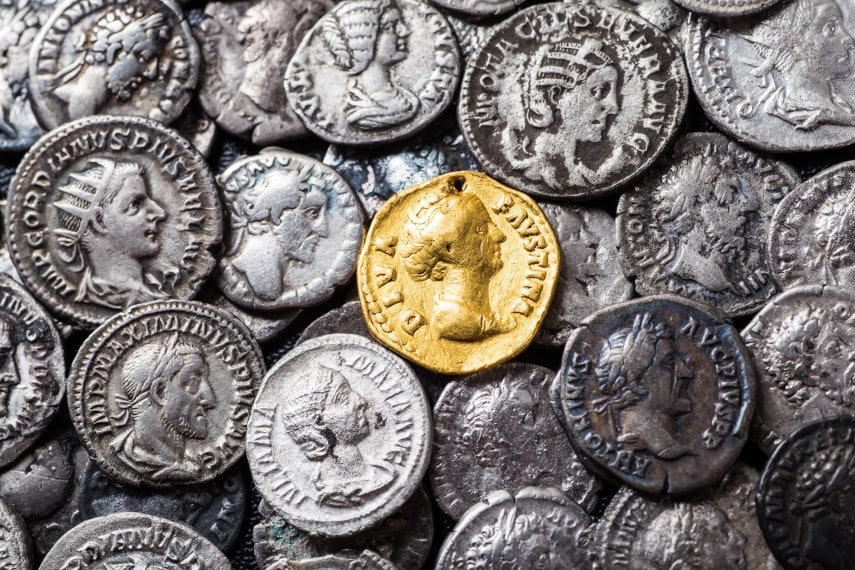When Washington Starts Breaking Precedents, Watch Out
While legal codes govern modern life today more so than in centuries past, they’re not the only sets of rules in our legal system Case law, or precedent, is just as important Precedent isn’t...
Political

How often do you think about the Roman Empire? Unless you’ve been living under a rock for the past month, you know that the answer, at least for men, is every day.
In all seriousness though, we know that that’s just the answer for the popular TikTok meme, and that many people probably don’t actually think about the Roman Empire every day. But then again, many do. The parallels between the Roman Empire and our society today are legion, and are getting too strong to ignore.
Looking at the Roman system of governance, the corruption that became endemic during the Empire, and the bread and circuses, you can certainly understand why one might draw parallels to our present time. Or look at the vast movement of peoples that eventually undermined the Empire, and the parallels to what is going on throughout the Western world today, and particularly at our southern border.
But leaving those aside, perhaps the most pernicious thing happening to our society today is the continued devaluation of our currency. And, just like many other things happening today, that devaluation has parallels to the Roman Empire.
The very word money derives from the goddess Juno Moneta, the protectress of money. It was near her temple that some of the first Roman coins were ever minted.
The Roman system of measures and the names of coins influenced the international monetary system through the naming system of pre-decimalisation British coinage. The pound (£), shilling (s), and pence (d) symbols derived from the Roman libra, solidus, and denarius.
Perhaps Roman currency’s greatest lesson was in underscoring the devastating impact of inflation and currency devaluation on society. Whether currency devaluation accelerates societal collapse or is merely a symptom of it can certainly be debated. But the negative impacts of inflation and devaluation cannot be ignored.
Ancient Rome is perhaps the earliest, and possibly one of the most studied and understood, examples of inflation. Over the course of centuries, Roman coinage was continuously debased, until what had once been nearly pure silver coins eventually contained only about 0.5% silver.
The benefit of debasement for those issuing coins is well known. If you can mint coins with half the silver content as before, but get people to accept them at the same face value as the full silver content coins, you have essentially doubled the amount of money you can use.
But the laws of economics are universally valid, and that short-term benefit eventually disappears. Once the money supply doubles, prices inevitably rise to reflect the increased amount of money circulating in society.
If the coin issuer wants to continue benefiting from debasement, it has to debase the currency once again. And so we see how successive Roman rulers continually debased Roman currency in order to gain a financial advantage, until at last Roman currency contained almost no silver whatsoever.
While the rulers benefited from that new money, the common people suffered ever higher prices and a diminished standard of living. With inflation rates estimated as high as 15,000%, Roman inflation exacted a punishing price on everyday Roman citizens.
In the United States, we’re experiencing much the same problem today. And lest you think that the US dollar isn’t in the same dire straits as the Roman denarius was, think again.
According to the government’s own inflation statistics, the US dollar has lost 97% of its purchasing power since 1913. And if you look at the dollar’s performance against gold, which was $35 an ounce in the early 1970s, the dollar’s purchasing power has lost over 98% in just over 50 years.
In other words, the US dollar has experienced Roman-like declines in purchasing power, but how many Americans are even cognizant of that fact? How many people are so distracted by football games, TV shows, and social media influencers that they are oblivious to the cultural and financial collapse going on around them?
Just like ancient Rome, the US dollar’s situation doesn’t seem likely to improve. Successive governments have benefited too much from inflationary monetary policy to enable continued deficit spending, and no one wants to shut down the gravy train.
Much like ancient Rome, it will likely only be a matter of time before the US dollar completely collapses. How long that will take is anyone’s guess. But with a national debt of over $33 trillion, and annual budget deficits that run in the trillions, the US government isn’t exactly trying to make it easier to keep the dollar from weakening.
The fall of the Roman Empire was a cataclysmic event for Western Europe. It ushered in the Dark Ages, and a period of social, economic, and cultural upheaval throughout the continent.
It took hundreds of years to restore any semblance of political stability within Europe, and even longer for economic growth to really recover. And when trade really began to grow, it was partially due to monetary developments that saw sound gold and silver currencies adopted.
Throughout history, gold and silver have formed the basis for monetary systems around the world. When those systems are allowed to function properly, and no one tries to cheat the system, societies flourish. And when debasement, coin clipping, and other inflationary policies are pursued, societies decline.
The numerous parallels between the decline of the Roman Empire and the decline of American political and economic hegemony are numerous. It’s only natural for Americans to worry about what the future will look like, not only for ourselves but for our children and grandchildren.
Many Americans fear an inevitable collapse of our social order, and continued devaluation of the dollar, and they’re determined to do something about it. One way they’re helping to protect themselves is by buying gold.
Gold has a reputation as a hedge against inflation over the long run, and as a safe haven asset during times of economic uncertainty and financial turmoil. Our present age, dominated by central banks, interventionist monetary policy, and arbitrary interest rate manipulation, can certainly be described as one of monetary uncertainty.
That’s why so many people are flocking to the stability of gold and silver. Whether they’re making direct cash purchases of gold or taking advantage of a gold or silver IRA to protect their tax-advantaged retirement savings, demand for gold and silver have been strong.
With over $2 billion in precious metals placements and thousands of satisfied customers, Goldco has helped many people safeguard their savings with gold and silver. Call Goldco today to learn more about the gold and silver purchase options that you can take advantage of today.



